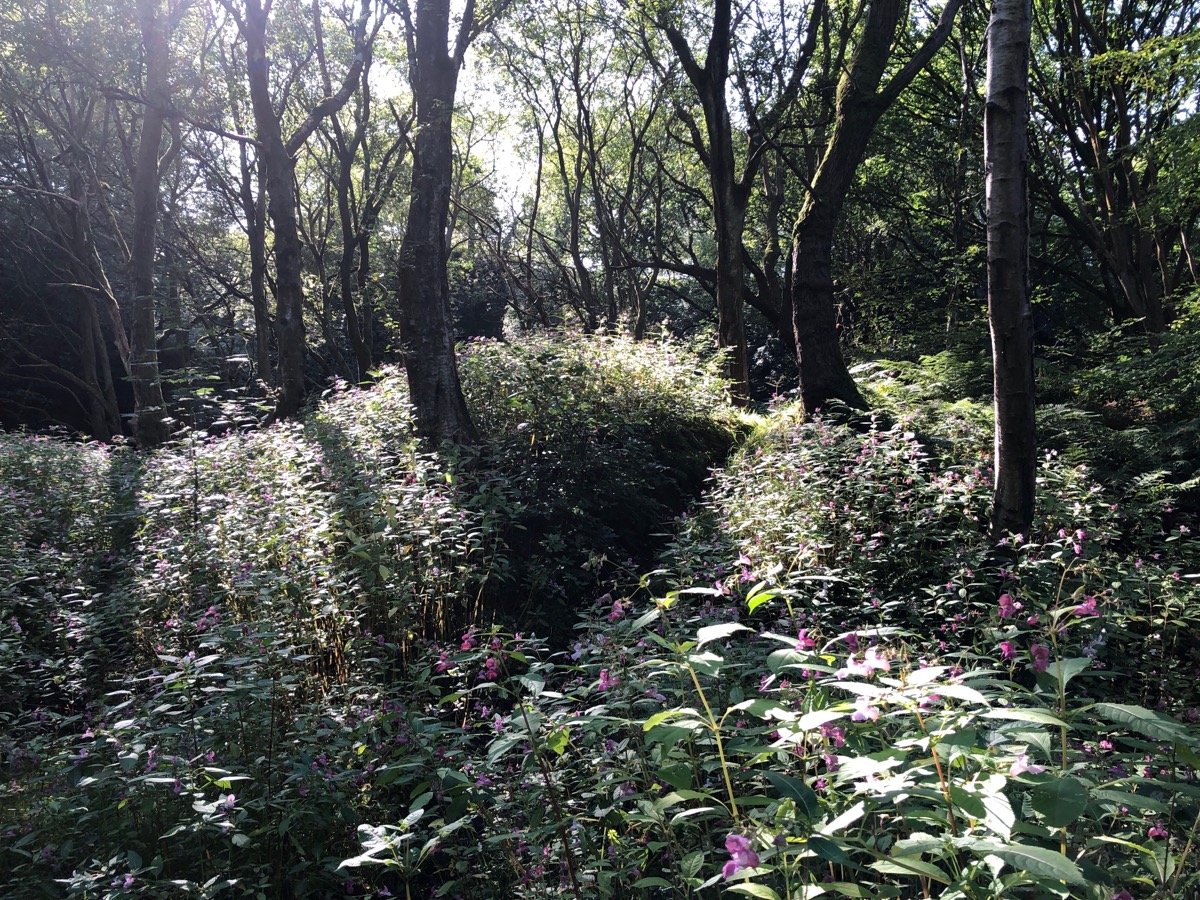An oppressively hot day. Jen visited her mum in the afternoon, so I took Rosie the cocker spaniel for a walk in Crow Nest Wood. It was surprisingly dark under the dense beech foliage, and my eyes struggled to adjust between shade and bright sunlit patches.

Invasive Himalayan balsam had taken over the abandoned quarry. It was taller than me in some places. A pretty but troublesome plant. It grows so densely, nothing else stands much of a chance. To add insult to injury, the balsam also out-competes many of the local flora for pollinators.
Introduced to Britain from the eponymous Himalaya by Victorian plant hunters, the ornamental plant soon escaped our gardens and began to take over. Far from its natural enemies, it has thrived, although a pathogenic fungus that is believed only to attack the balsam has been released at a number of sites over recent years to study its effectiveness as a biological control.
What’s the worst that could happen?
Leave a Reply